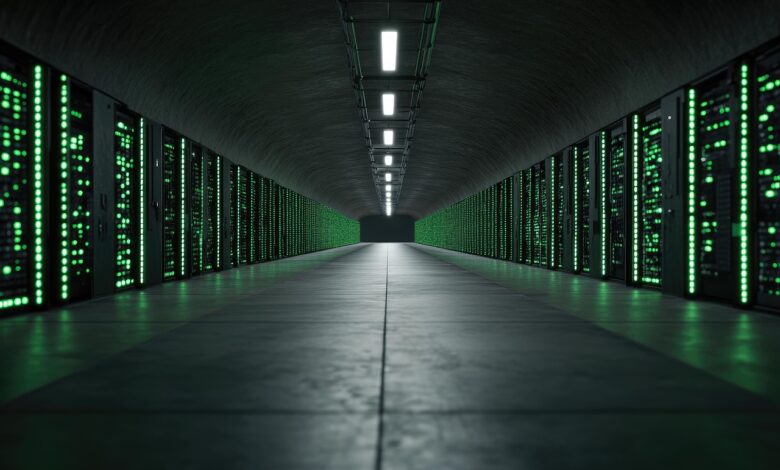
Just a few years ago, the data centre industry was delivering some of the most impressive decarbonisation results of any sector — valiantly balancing the seemingly-incompatible goals of cutting emissions while meeting growing global demand from cloud, IoT, and other sources of digital growth.
Despite internet traffic and data centre workloads rising dramatically throughout the 2010s, data collected by the IEA shows that data centre power consumption more or less plateaued over the same period. Even when internet traffic functionally doubled during lockdown, data centre operators managed to do the unthinkable, restraining the industry’s energy consumption to just 1% of global demand. It really felt that the data centre sector was making a real, tangible effort to thread the needle between rising demand and decarbonisation. And it was succeeding.
Turn back the clock to 2022 and you’d see an industry awash with bold net zero commitments — often exceeding the standards set by the Paris Climate Accords — enthusiastically embracing green power, and ambitious about a decarbonised future for digital infrastructure.
Now, in 2025, that state of affairs seems like a distant memory.
Are we ready for the AI boom without compromising on decarbonisation goals?
GenAI arrived at the tail end of 2022, with the first crop of large language models (LLMs) being released to the public.
Since then, everything’s changed. GenAI kicked data centre demand into overdrive, demanding orders of magnitude more computing power than the cloud, or something as quaint as Google search. Before the GenAI boom, the average data centre required between three and six kilowatts (kW) per rack. The latest generation of AI servers from Nvidia need roughly 130kW to 250kW. The next may need as much as four times that.
As a result, The IEA’s latest annual electricity report estimates that, while data centers consumed 460TWh in 2022, that figure could rise to more than 1,000TWh by 2026.
This insatiable demand for electricity is already putting pressure on overstressed power grids, and the solutions gaining popularity in the biggest data centre markets are worryingly regressive. AI has been a revitalising force for the fossil fuel industry and, even in the wake of lighter, less consumptive models like DeepSeek, Silicon Valley’s response has been to double down, build bigger and bigger models, all while promising that the intangible grail of AGI will somehow have the transformative effects needed to overcome the climate crisis.
All across the sector, tech firms, operators, analysts and agencies have spent the last two years quietly walking back, watering down, or outright abandoning their decarbonisation goals, as it becomes clear just how big a gap exists between net zero and where we’re headed has grown.
Many have turned to carbon credits — at best, a flawed method; at worst, out and out greenwashing — to close the sustainability gap created by AI.
In the US, the AI Boom is revitalising the country’s gas-fired power industry, with energy companies planning new natural gas-fired power generation at a rate we haven’t seen in decades. Jed Dorsheimer, group head of the energy and sustainability sector at investment bank William Blair, told Bloomberg last September that he’s seeing gas accounting for well over half of new energy generation — a far cry from the reality a few years ago, when “there was the expectation that solar and wind would be able to solve our additional generation needs.”
It’s not good enough. The data centre industry needs to find a way to meet the power demands of a GenAI future without abandoning decades of hard-won progress towards decarbonising the sector.
Can the ageing UK grid keep up with increased investment?
The British Government recently threw its support not just behind data centres as critical national infrastructure, but also the goal of turning the UK into an “AI superpower” with a string of regulations intended to create AI development zones and attract more data centre operators to the country. The National Grid has since issued a warning that GenAI use could cause the UK’s total electricity demand to spike by 500% over the coming decade. The UK, along with many European countries, is facing significant bandwidth issues when it comes to grid capacity and delivering the power needed for data centres. The magnitude of this issue is something I think a lot of people, including the government, struggle to fully grasp.
Power demand is the biggest problem facing the data centre industry in the years to come — even without the exacerbating influence of GenAI. Not only is the UK grid ill-equipped to handle that kind of precipitous rise in demand, but the kind of data investment Sir Keir Starmer is hoping to attract is unlikely to materialise given the fact that powering and cooling a large data centre in the UK costs roughly four times as much as in the US — let alone in the Nordics.
Essentially, the UK data centre sector needs to grow significantly in terms of investment and capacity, draw down its environmental impact, reduce the strain it’s placing on the grid, and find a way to cut electricity prices in half and then in half again.
There’s no one silver bullet solution that’s going to resolve this problem, but there’s no denying that on-site or near-site energy solutions are going to be an essential piece of the puzzle.
What type of near-site energy solutions should the data centre industry implement?
Solar PV is the cheapest form of energy in the UK today. It’s unsubsidised and, in many regions, including Spain and parts of Europe, wind and solar are cheaper than oil and gas. The cost comparison has shifted; renewables are now a win-win. The key challenge,of course, is building these energy sites at scale. It’s an obvious and quick win, but it doesn’t provide UPS or backup power.
A private-wire solution can support somewhere between 20% and 30% of a hyperscale facility’s power demands using near-site solar, not only reducing their carbon impact, but critically insulating data centres against energy price spikes, grid failures, and higher consumption during the hottest months of the year when cooling systems are under the heaviest load and PUE is prone to creep past optimum levels.
It won’t solve the problem by itself, but there is no single solution to this very thorny problem.
What’s needed is a holistic approach, integrating near-site renewable generation into a larger, complex system that generates, stores, and redistributes both heat and power.
Near-site renewables have the potential to take strain off the grid in multiple ways, alleviating extra power requirements during the hottest parts of the year, and returning excess heat to district heating systems. It’s not just about district heating, though. Waste heat from data centers could be rerouted to power industrial facilities, with the excess being routed into a community-wide heating network, supporting multiple industries and reducing the need for additional energy.
If the UK data centre industry wants to meet the demands of GenAI without throwing its sustainability aspirations in the bin, or wrecking our national power infrastructure, it needs tangible steps towards that goal that solve problems today and unlock new wins tomorrow.





